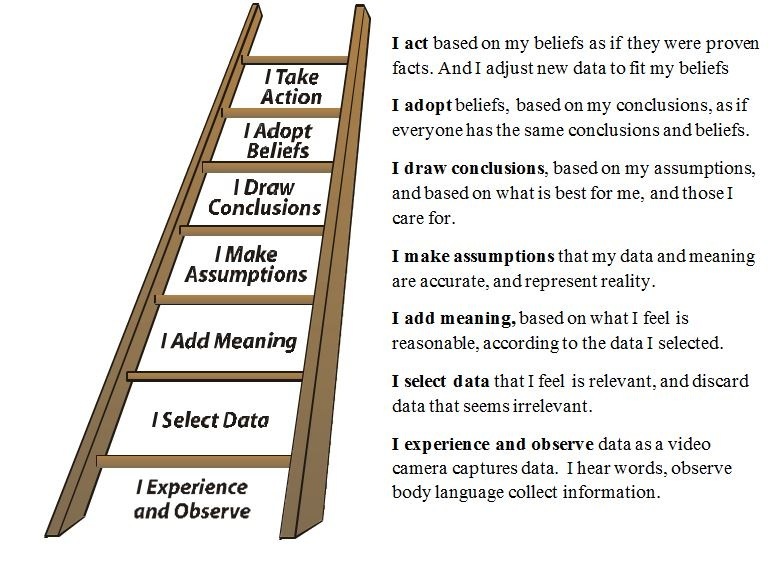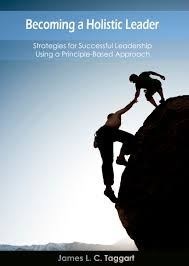What’s Your Leadership Lens?

How do you perceive the world?
Is your glass half empty, or half full?
When you interact with people, whether at work or in your community, do you inherently trust them?
As human beings we haul around a lot of baggage, the accumulation of years and years of experiences: parents, grandparents, teachers, community leaders, aunts and uncles, bosses (good and bad), and the list goes on.
How we see the world and function on a daily basis is determined by what’s called our mental models. That’s fancy talk for our bundled assumptions, beliefs and values acquired over our lifetimes. Two people who have studied and written extensively on mental models are Peter Senge and his mentor, Harvard psychologist Chris Argyris.
Senge’s 1990 widely acclaimed book The Fifth Discipline: The Art and Practice of the Learning Organization did a lot to help people better understand how they learn and work together, in particular within the artificial constructs of organizations. Argyris’ concept of the Ladder of Inference serves as a pathway to explain how our mental models are formed and how they evolve as we age.

Whether you think of this concept as a continuum or perhaps a movie film, we begin with real data; in other words, real life daily experiences. We interpret these experiences, selecting certain ones and then determine their meaning.
We then develop assumptions based on what we’ve drawn from our experiences and the meanings we’ve attached to them.
The next step is the conclusions we establish, which in turn help form our beliefs. From these beliefs our daily behaviours and actions emerge.
You may be thinking at this point that this Ladder is actually a circular diagram because life is not a linear process. You’d be correct on this.
Each of us is continually exposed to new experiences each day, which may reinforce the assumptions and conclusions we’ve developed. However, they may also conflict with them as well. Internal conflict will occur more often if we expose ourselves to new situations and experiences, stretching our learning into new areas.
The Ladder of Inference has useful applications, for example, to teamwork. Understanding how people can quickly develop incorrect assumptions and beliefs about co-workers can help place issues in the proper context.
Here’s a simple example:
• Bob is a member of a team. Every Monday morning the team meets at 9am.
• However, Bob sometimes arrives late for meetings.
• Bob knows there’s a team meeting every Monday, but comes late.
• Therefore, Bob is unreliable and can’t be counted upon.
The Ladder of Inference, consisting of “data,” assumptions and beliefs, in turn producing a negative attitude towards Bob, may be corrected if the team takes the time to talk to Bob. As it turns out, Bob’s a single dad with three young kids. The team may wish to discuss how to adjust their meeting time.
Now let’s look at two more detailed fictional examples of the Ladder of Inference at work in an organizational setting.

Chuck: Demoralized Baby Boomer
Chuck is 52, a “young” Boomer who has worked in government since graduating from college. He’s a middle manager who keeps his head down, avoids rocking the boat and taking risks, and has a keen eye cast towards eventual retirement, which won’t come too soon in his mind.
When Chuck was growing up, he was taught to respect his elders, whether parents, relatives, neighbours or teachers. He was urged to go to college by his school guidance counsellor and his dad; learning a trade was not on the radar. Throughout his teens and college years, Chuck learned that compliance to authority was the way it is. He also learned that whether it was one of his college profs or bosses during summer jobs, that you did what you told and never questioned instructions or spoke up.
Some of these bosses, including a few of the early ones after he joined government, tended to be abusive. Chuck learned how to take criticism, sometimes insults, regardless of whether he had performed a task properly or achieved a desired result. He began to shut down, making a point of avoiding any decisions involving risk or using creative problem solving.
By the time he was in his mid-thirties, Chuck had taken on supervisory duties with a small staff composed of people in their late twenties and early thirties. He was finding it difficult to supervise his staff since several of them had no problem with speaking up, whether suggesting new ideas or objecting to some of Chuck’s decisions. “What the heck’s wrong with these young people,” he’d ask himself. “I’m their boss; they should follow my decisions.”
Yet Chuck’s boss and the higher-ups followed the “I’m the boss school of thought.” He did as he was told, having been burned a few times in the past when he had argued with certain management decisions.
Chuck was miserable; he felt sandwiched between demanding, insensitive bosses and overly confident youngsters. He wanted out but didn’t know what to do. He had job security and good pay and benefits, but hated the organization’s culture and what amounted to work with meaningless objectives.

Ashley: Assertive Millennial
At age 29, Ashley is getting impatient with management in her large company. “There are too many old farts hanging around work, Boomers who should retire and let younger employees get things done,” she’d regularly tell herself.
When she was growing up in a small city, her parents kept her active in numerous after school and weekend activities. They also insisted she study hard and get good marks. If her marks weren’t up to snuff, her mom wouldn’t hesitate to call one of Ashley’s teachers. This even continued while she attended college.
Ashley was regularly told that she could do whatever she wanted to when it came to choosing a career. Her folks told her she was “super smart.”
She also worked a few part-time jobs in her last year of high school, quitting them abruptly when her bosses “pissed her off.” The same pattern continued during college when she held summer jobs. This bothered her parents, but they typically defended her actions.
During her short tenure with her company, she’s learned to get her way through whatever means.
Now that she’s worked five years after earning a MBA, Ashley feels she’s ready to become a manager. In her eyes, “If only those bozos in upper management would see that I have what it takes to manage people and to get things done.”
Ashley typically produces high quality work, for which she’s been recognized. However, to help her with inter-personal skills, one of her former bosses had tried coaching her, but that effort failed in what her peers recall as “Ashley’s meltdown.” She didn’t need any feedback from some over-the-hill guy.
Ashley’s about to turn thirty and she’s miserable: “It’s time to do some serious job-hunting and find a job where my talents will be appreciated.”
So there you have two different examples of two individuals, with different genders and from two contrasting generations.
Use the Ladder of Inference to examine how Chuck and Ashley have evolved in their perceptions and beliefs towards their organizations and in particular their peers and bosses.
You may conclude that this is all theoretical stuff, that it’s the domain of academics. If so, I challenge you to keep a keen eye on your workplace. Watch and listen to how your co-workers draw conclusions about others. Better yet, take a close look at how you operate at work.
Those of us who learn humility and who acknowledge and accept our personal weaknesses are that much stronger in the end. This is how leadership is formed and eventually earned.
People don’t resist change. They resist being changed. – Peter Senge
___________________________________________________________________________________________________

Visit Jim’s e-Books, Resources and Services pages.
"""""
Articles from Jim Taggart
View blog
The human race is an odd species. Adaptive to immediate threats and catastrophes, we as humans have ...

Your faithful correspondent has been a long-time proponent of self-empowerment, writing extensively ...

Today, we’ll look at the four stages of team development and incorporate the four team player styles ...
You may be interested in these jobs
-
drafting technologist
Found in: Talent CA 2 C2 - 1 day ago
Durasystems Barriers Inc. Vaughan, CanadaEducation: · Expérience: · Education · College/CEGEP · Tasks · Prepare engineering designs and drawings · Develop and prepare design sketches · Complete documentation packages and drawing sets · Examine drawings for conformity and errors · Computer and technology knowledge · Au ...
-
Regional Multimedia Marketing Consultant
Found in: beBee S2 CA - 1 week ago
Black Press Media Terrace, Canada Full time· Position: Regional Multimedia Marketing Consultant Looking for a career with the opportunity for advancement close to home? · Tired of working a dead-end job or just want to return to full-time work? · Black Press has an opening for a permanent full-time Regional Multimedia ...
-

Industrial Electrician
Found in: Talent CA C2 - 1 week ago
C.O.R.E. Services Lincoln, Canada Full timePosition: Industrial Electrician · Pay: $40-$42 per hour. · Shifts Available: Continental Rotating Shift · Location: Beamsville, ON · Responsibilities:Install power supply wiring and conduit for newly installed machines and equipment such as robots, conveyors, and programmable co ...


Comments